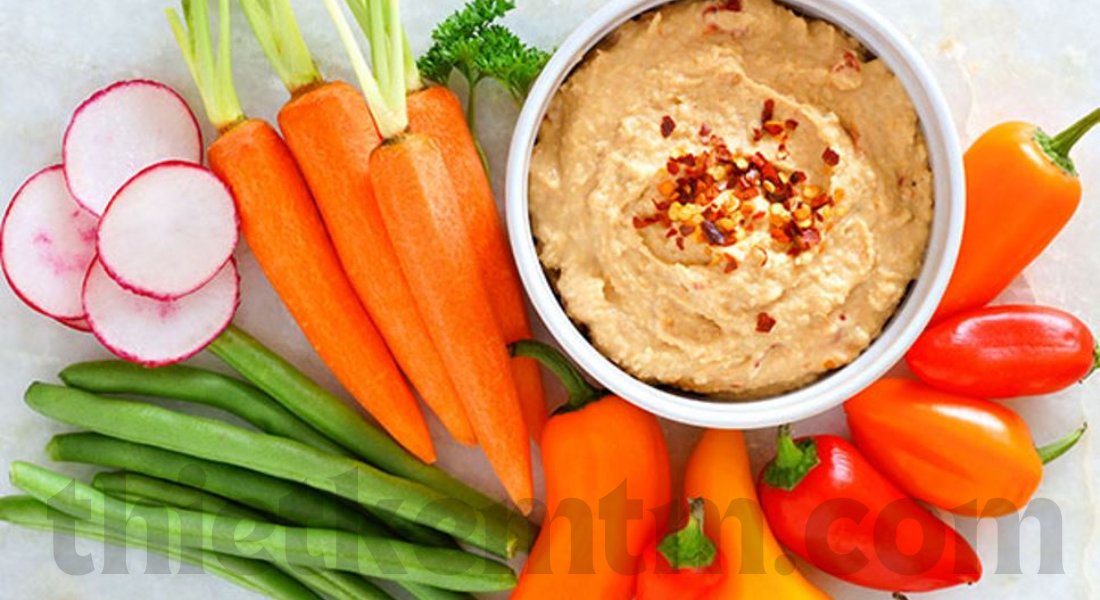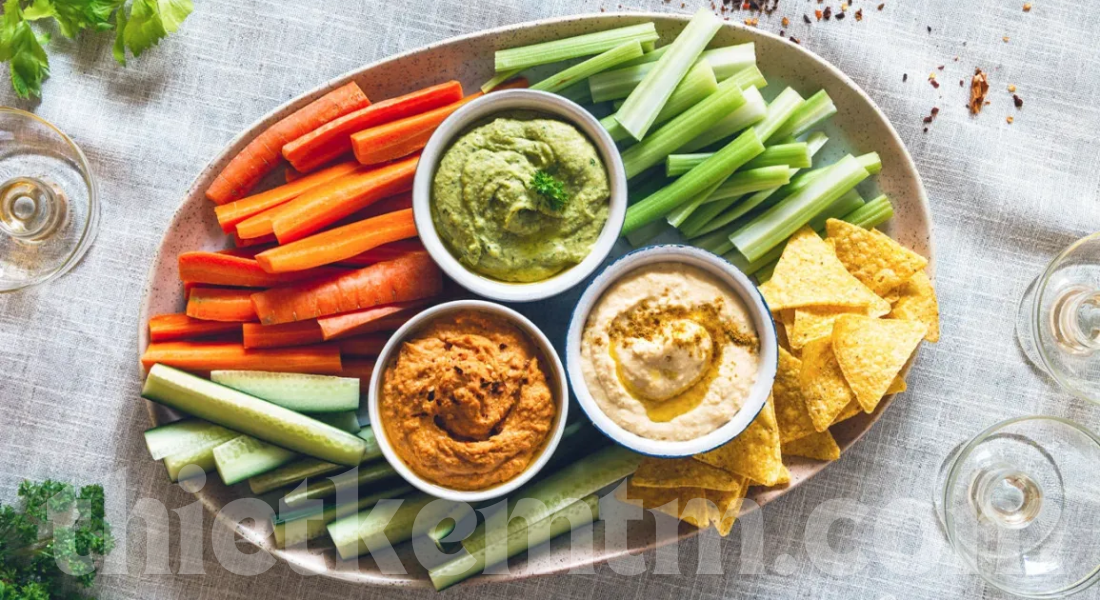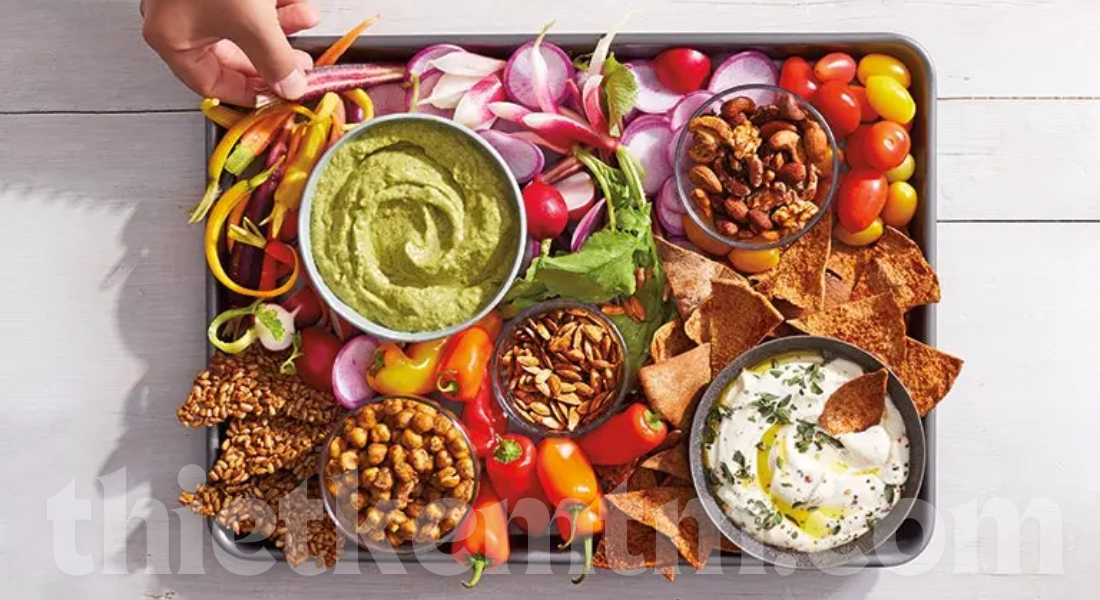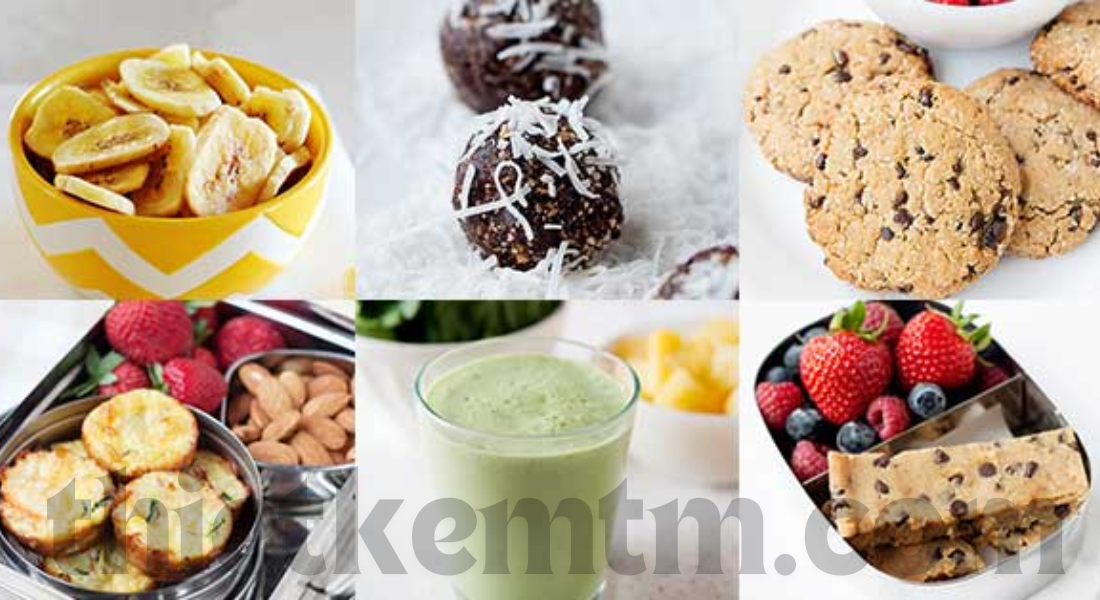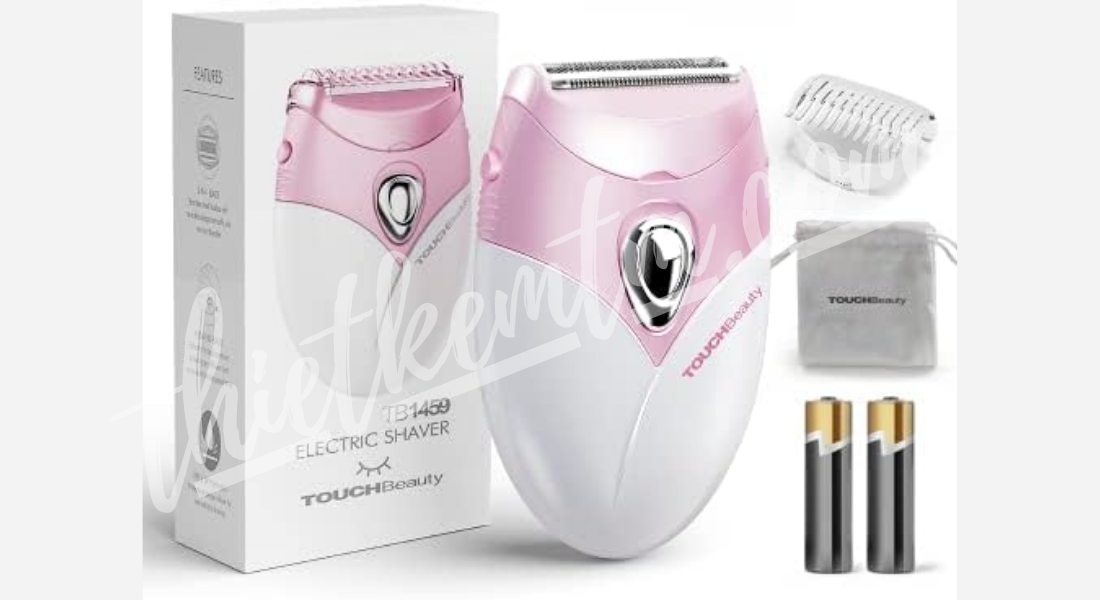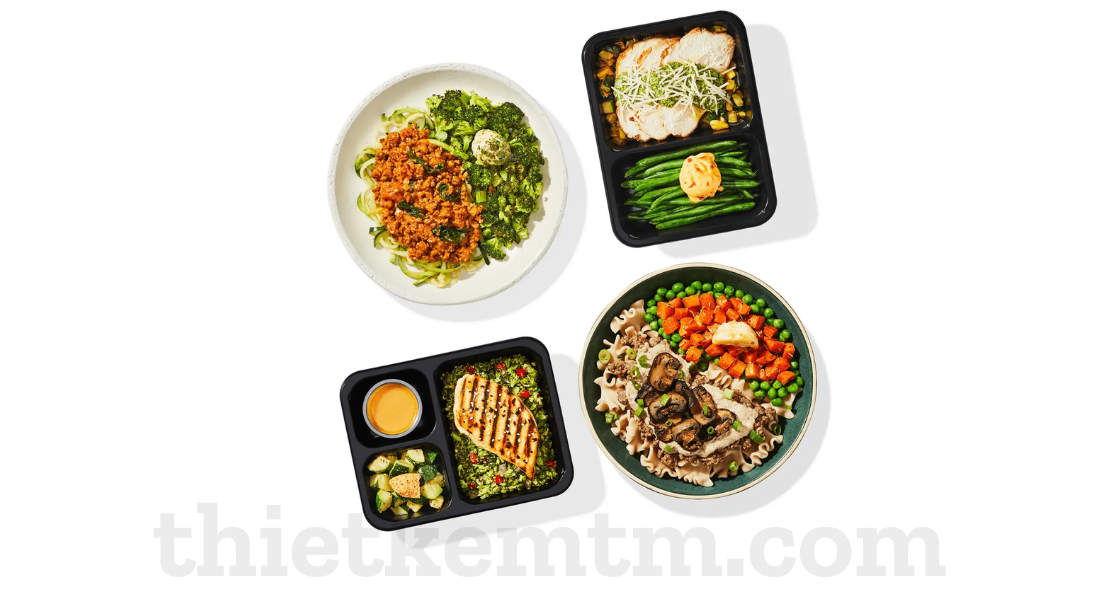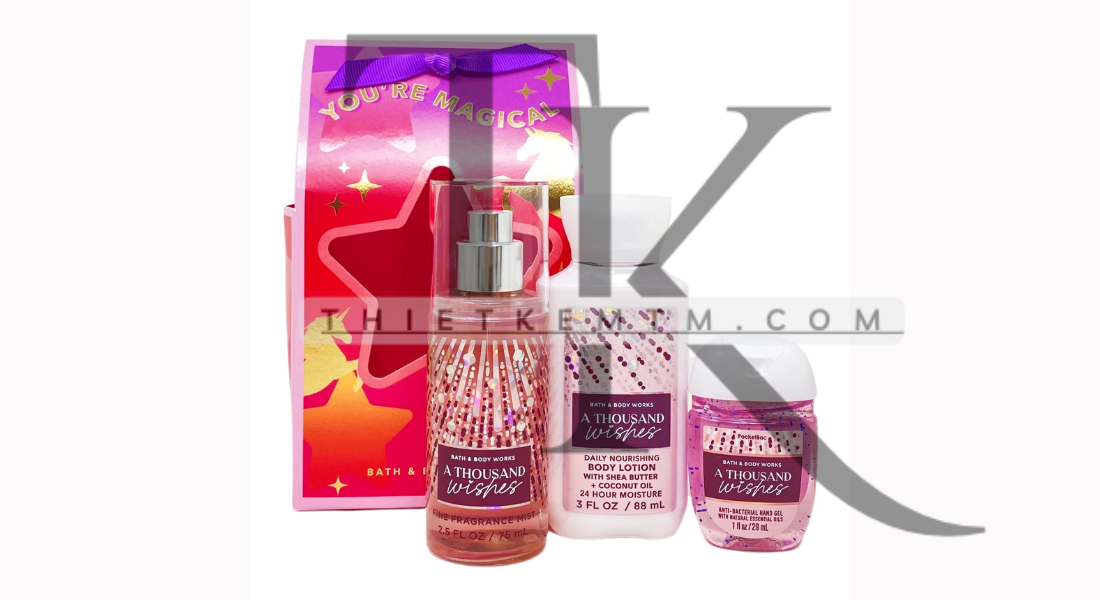In today’s fast-paced world, finding healthy and convenient snack options can be a challenge. Clean eating snacks offer a perfect solution, combining nutrition with taste to keep you energized and satisfied throughout the day. This comprehensive guide explores the best clean eating snacks, their benefits, and how to incorporate them into your daily routine for a healthier lifestyle.
Understanding Clean Eating Snacks
Clean eating snacks focus on whole, minimally processed foods that provide essential nutrients without unnecessary additives. These snacks emphasize natural ingredients, balanced macronutrients, and are free from artificial preservatives, colors, and flavors. By choosing clean eating snacks, you support your body’s needs while avoiding the pitfalls of processed junk food.
What Defines a Clean Eating Snack?
A clean eating snack typically includes:
- Whole Foods: Fruits, vegetables, nuts, seeds, and whole grains.
- Minimal Processing: Foods that retain their natural state with little to no added ingredients.
- Nutrient-Dense: High in vitamins, minerals, fiber, and healthy fats.
- Low in Added Sugars and Unhealthy Fats: Avoidance of refined sugars and trans fats.
Benefits of Clean Eating Snacks
Choosing clean eating snacks over processed alternatives offers numerous health benefits. These snacks not only curb hunger but also contribute to overall well-being by providing essential nutrients that support various bodily functions.
Enhanced Nutrition Intake
Clean eating snacks are packed with vitamins, minerals, and antioxidants, ensuring your body receives the nutrients it needs to function optimally. Unlike processed snacks, which often lack nutritional value, clean snacks contribute positively to your daily intake.
Weight Management
By opting for nutrient-dense snacks, you can better manage your weight. Clean eating snacks help you feel fuller for longer, reducing the likelihood of overeating and making it easier to maintain a healthy weight.
Improved Energy Levels
Clean snacks provide a steady release of energy, preventing the spikes and crashes associated with sugary, processed foods. This sustained energy boost keeps you alert and focused throughout the day.
Better Digestion
High-fiber clean eating snacks support healthy digestion by promoting regular bowel movements and preventing constipation. Fiber also aids in maintaining a healthy gut microbiome, which is crucial for overall health.
Reduced Risk of Chronic Diseases
Incorporating clean eating snacks into your diet can lower the risk of chronic diseases such as heart disease, diabetes, and certain cancers. The antioxidants and anti-inflammatory compounds found in whole foods help protect against cellular damage and inflammation.
Enhanced Mental Clarity and Mood
Nutrient-rich snacks can positively impact brain health, improving cognitive function and mood. Essential fatty acids, vitamins, and minerals play a vital role in neurotransmitter function and overall brain health.
Frequently Asked Questions about Clean Eating Snacks
1. What Are Some Quick Clean Eating Snack Ideas?
Quick clean eating snacks include fresh fruit with nut butter, veggie sticks with hummus, homemade trail mix, Greek yogurt with berries, and energy balls. These options require minimal preparation and can be enjoyed on the go.
2. Can Clean Eating Snacks Help with Weight Loss?
Yes, clean eating snacks can support weight loss by providing nutrient-dense options that keep you full and satisfied. They help prevent overeating during meals and provide sustained energy without excess calories.
3. How Can I Make Clean Eating Snacks More Interesting?
Experiment with different flavors, spices, and ingredients to keep your snacks exciting. Incorporate seasonal produce, try new recipes, and mix various textures to create a diverse snacking experience.
4. Are Clean Eating Snacks Suitable for All Diets?
Most clean eating snacks are suitable for various dietary preferences, including vegan, gluten-free, and paleo diets. However, it’s important to choose recipes and store-bought options that align with your specific dietary needs.
5. How Can I Incorporate More Fiber into My Snacks?
Increase fiber intake by adding ingredients like chia seeds, flaxseeds, oats, fruits, and vegetables to your snacks. High-fiber options like trail mix, energy balls, and veggie dips are excellent choices.
6. What Should I Look for When Buying Store-Bought Clean Eating Snacks?
Look for snacks with whole food ingredients, minimal processing, and no added sugars or unhealthy fats. Check the ingredient list for recognizable items and avoid products with artificial additives.
7. Can I Prepare Clean Eating Snacks in Advance?
Yes, many clean eating snacks can be prepared in advance, such as energy bars, chia seed pudding, and roasted chickpeas. Preparing snacks ahead of time ensures you have healthy options readily available.
8. Are There Any Low-Calorie Clean Eating Snacks?
Yes, options like fresh fruit, veggie sticks with hummus, air-popped popcorn, and homemade roasted chickpeas are low in calories while being nutrient-dense and satisfying.
9. How Do Clean Eating Snacks Affect My Energy Levels?
Clean eating snacks provide a steady release of energy by combining carbohydrates, proteins, and healthy fats. This balance helps maintain stable blood sugar levels and prevents energy crashes.
10. Can Clean Eating Snacks Improve My Overall Health?
Absolutely. Clean eating snacks contribute to better nutrition, weight management, improved digestion, enhanced mental clarity, and reduced risk of chronic diseases. They support overall health by providing essential nutrients and promoting a balanced diet.
Tips for Incorporating Clean Eating Snacks into Your Diet
Integrating clean eating snacks into your daily routine can enhance your overall nutrition and support your health goals. Here are some practical tips to make the transition seamless and enjoyable.
1. Plan Ahead
Preparation is key to maintaining a clean eating snack regimen. Plan your snacks in advance and ensure you have healthy options readily available to avoid reaching for processed alternatives.
- Create a Weekly Meal Plan: Outline your breakfast, lunch, dinner, and snacks for the week, ensuring each meal includes at least one clean eating snack.
- Make a Grocery List: Based on your meal plan, create a detailed grocery list to ensure you have all the necessary ingredients on hand.
- Prep in Advance: Prepare ingredients like washing and chopping vegetables, cooking grains, or pre-cooking proteins to save time during the week.
2. Keep Healthy Snacks Accessible
Store clean eating snacks in easily accessible places such as your desk, car, or bag. This ensures you have nutritious options on hand whenever hunger strikes.
- Desk Drawers: Keep a stash of nuts, seeds, or trail mix in your desk drawers for quick access during work hours.
- Car Compartments: Store non-perishable snacks like roasted chickpeas or energy bars in your car for on-the-go needs.
- Bag Essentials: Include a small container of veggie sticks or a homemade energy ball in your daily bag.
3. Read Labels Carefully
When purchasing store-bought snacks, always read the labels to check for added sugars, unhealthy fats, and artificial ingredients. Opt for products with short, recognizable ingredient lists.
- Ingredient Transparency: Choose brands that list all ingredients clearly and avoid those with artificial preservatives, colors, or flavors.
- Sugar Content: Be mindful of the sugar content, opting for natural sweeteners and low-sugar options.
- Healthy Fats: Ensure that fats come from healthy sources like nuts, seeds, or plant-based oils, rather than trans fats or hydrogenated oils.
4. Portion Control
Even healthy snacks can contribute to weight gain if consumed in large quantities. Be mindful of portion sizes and use containers or snack bags to manage serving sizes effectively.
- Pre-Portioned Packs: Divide snacks like nuts or trail mix into individual portions to prevent overeating.
- Measuring Cups: Use measuring cups or a kitchen scale to ensure you’re consuming appropriate amounts, especially for calorie-dense foods like nuts and seeds.
- Mindful Eating: Eat snacks slowly and savor each bite to better recognize when you’re full.
5. Combine Different Food Groups
Create balanced snacks by combining proteins, healthy fats, and carbohydrates. This combination helps stabilize blood sugar levels and keeps you feeling full longer.
- Protein and Carbs: Pair fruits with nut butters or yogurt with granola.
- Fats and Fiber: Combine avocado with whole grain toast or hummus with veggie sticks.
- Protein and Fats: Mix Greek yogurt with nuts or add seeds to smoothies.
6. Experiment with Flavors
Don’t be afraid to try new flavors and ingredients to keep your snacks interesting. Use spices, herbs, and natural flavor enhancers to add variety and excitement to your snack options.
- Spicy Flavors: Add chili flakes or paprika to roasted chickpeas for a spicy kick.
- Herbal Notes: Incorporate fresh herbs like cilantro or parsley into dips and spreads.
- Sweet Enhancements: Use natural sweeteners like honey, maple syrup, or dates to add sweetness without refined sugars.
7. Listen to Your Body
Pay attention to how different snacks make you feel. Choose options that provide sustained energy without causing energy crashes or digestive discomfort.
- Energy Levels: Opt for snacks that give you a steady energy boost rather than a quick spike followed by a crash.
- Digestive Comfort: Choose high-fiber snacks that support digestion and prevent bloating.
- Satiety: Select snacks that keep you full and satisfied between meals, reducing the urge to reach for unhealthy options.
8. Incorporate Seasonal Ingredients
Use seasonal fruits and vegetables in your snacks to enjoy fresh flavors and maximize nutritional benefits. Seasonal ingredients are often more flavorful and affordable.
- Spring: Fresh strawberries, asparagus, and peas.
- Summer: Watermelon, cucumbers, and tomatoes.
- Fall: Apples, pumpkins, and sweet potatoes.
- Winter: Citrus fruits, Brussels sprouts, and kale.
9. Make It a Habit
Consistency is crucial for developing healthy snacking habits. Incorporate clean eating snacks into your daily routine by setting specific times for snacks, such as mid-morning or afternoon breaks.
- Scheduled Snacking: Allocate specific times in your day for snacks to prevent random grazing.
- Routine Integration: Integrate snacks into your daily activities, such as having a handful of nuts during a morning meeting or a piece of fruit during an afternoon break.
10. Share with Others
Encourage family members or friends to join you in adopting clean eating snacks. Sharing healthy snacks can make the experience more enjoyable and foster a supportive environment.
- Group Preparation: Prepare snacks together with family or friends to make it a fun activity.
- Snack Swaps: Share your favorite clean eating snack recipes with others and try theirs in return.
- Community Support: Join online communities or local groups focused on clean eating for inspiration and motivation.
Common Mistakes to Avoid with Clean Eating Snacks
While adopting clean eating snacks is beneficial, certain pitfalls can undermine your efforts. Avoid these common mistakes to ensure your snacking habits support your health goals effectively.
1. Overconsumption of Healthy Fats
While healthy fats are essential, they are calorie-dense and can contribute to weight gain if consumed in excess. Balance your intake of fats with other macronutrients.
- Moderation: Include sources of healthy fats in your snacks without overloading. A tablespoon of nut butter or a small handful of nuts is sufficient.
- Balanced Recipes: Combine fats with proteins and carbohydrates to create balanced snacks that prevent overeating.
2. Relying Solely on Store-Bought Snacks
Store-bought snacks, even if labeled as clean, can sometimes contain hidden sugars and preservatives. Balance your diet with homemade snacks to ensure complete control over ingredients.
- Homemade Advantage: Make your own snacks to know exactly what goes into them.
- Selective Purchasing: Choose store-bought options carefully, opting for those with simple, whole ingredients.
3. Ignoring Portion Sizes
Portion control is critical, even with healthy snacks. Use measuring cups or pre-portioned containers to manage serving sizes and prevent overeating.
- Pre-Portioned Snacks: Pack single-serving sizes to avoid mindless eating.
- Mindful Serving: Use smaller plates or bowls to help control portion sizes naturally.
4. Neglecting Protein
Ensure your snacks include a source of protein to keep you feeling full and support muscle health. Combining protein with fiber and healthy fats creates a balanced snack.
- Protein Sources: Incorporate Greek yogurt, nuts, seeds, or plant-based proteins into your snacks.
- Balanced Combinations: Pair proteins with carbohydrates and fats for comprehensive nutrition.
5. Skipping Snacks Altogether
Skipping snacks can lead to overeating during meals and disrupt blood sugar levels. Incorporate regular clean eating snacks to maintain energy and prevent excessive hunger.
- Consistent Snacking: Schedule regular snack times to keep hunger at bay.
- Healthy Alternatives: Choose clean snacks that provide sustained energy without excessive calories.
6. Not Varied Enough
Eating the same snacks repeatedly can lead to nutrient deficiencies and boredom. Incorporate a variety of foods to ensure a broad range of nutrients and keep your snack routine exciting.
- Diverse Ingredients: Rotate different fruits, vegetables, nuts, and seeds in your snacks.
- New Recipes: Try new recipes regularly to keep your snacking experience fresh and enjoyable.
7. Adding Unhealthy Ingredients
Be cautious of adding sweeteners, oils, or other ingredients that can turn a healthy snack into a less nutritious option. Use natural sweeteners and healthy fats sparingly.
- Smart Additions: Limit the use of added sugars and choose healthy oils in moderation.
- Ingredient Control: Focus on the quality and quantity of ingredients to maintain the nutritional integrity of your snacks.
8. Clean Eating Snacks Overcomplicating Recipes
Keep your snack recipes simple to ensure they are easy to prepare and sustainable. Overcomplicating snacks can lead to frustration and inconsistency.
- Simple Recipes: Opt for easy-to-make snacks that require minimal ingredients and steps.
- Efficiency: Choose recipes that can be prepared quickly and stored easily for on-the-go consumption.
9. Ignoring Personal Preferences
Choose snacks that you genuinely enjoy to make clean eating sustainable. Forcing yourself to eat foods you dislike can lead to dissatisfaction and abandonment of healthy snacking habits.
- Personal Tastes: Select snacks that align with your flavor preferences and dietary needs.
- Customization: Modify recipes to suit your taste by adjusting flavors and ingredients accordingly.
10. Not Staying Consistent
Consistency is key to reaping the benefits of clean eating snacks. Ensure you make healthy snacking a regular part of your routine rather than an occasional indulgence.
- Habit Formation: Incorporate snacks into your daily schedule to build a consistent habit.
- Routine Adherence: Stick to your snacking plan even during busy or stressful times to maintain consistency.
8. Clean Eating Snacks Winter Citrus and Pomegranate Salad
Ingredients:
- 1 grapefruit, segmented
- 1 orange, segmented
- 1/2 cup pomegranate seeds
- 1 avocado, diced
- 2 tablespoons fresh mint leaves, chopped
- 1 tablespoon olive oil
- 1 tablespoon balsamic vinegar
- Salt and pepper to taste
Instructions:
- In a large bowl, combine grapefruit segments, orange segments, pomegranate seeds, and diced avocado.
- Add chopped mint leaves.
- In a small bowl, whisk together olive oil, balsamic vinegar, salt, and pepper.
- Drizzle the dressing over the salad and toss gently to combine.
- Serve immediately for a refreshing winter snack.
Health Benefits: This vibrant salad is rich in vitamin C from citrus fruits and antioxidants from pomegranates. Avocado adds healthy fats and fiber, making it a balanced and nourishing snack.
9. Spring Pea and Mint Dip
Ingredients:
- 1 cup fresh or frozen peas
- 1/4 cup fresh mint leaves
- 1/4 cup Greek yogurt (dairy or plant-based)
- 1 tablespoon lemon juice
- 1 garlic clove
- Salt and pepper to taste
- Whole grain crackers or veggie sticks for serving
Instructions:
- Steam the peas until tender, about 5 minutes if fresh or according to package instructions if frozen.
- In a blender, combine steamed peas, fresh mint leaves, Greek yogurt, lemon juice, and garlic. Blend until smooth.
- Season with salt and pepper to taste.
- Serve with whole grain crackers or veggie sticks.
Health Benefits: Peas are a great source of plant-based protein and fiber, while mint adds a refreshing flavor. Greek yogurt provides probiotics and additional protein, supporting digestive health and satiety.
10. Chocolate Avocado Mousse
Ingredients:
- 2 ripe avocados
- 1/4 cup unsweetened cocoa powder
- 1/4 cup almond milk
- 3 tablespoons honey or maple syrup
- 1 teaspoon vanilla extract
- Fresh berries for topping
Instructions:
- In a blender, combine avocados, cocoa powder, almond milk, honey, and vanilla extract.
- Blend until smooth and creamy.
- Spoon the mousse into serving bowls and refrigerate for at least 30 minutes.
- Top with fresh berries before serving.
Health Benefits: Avocado adds healthy fats and creaminess, while cocoa powder provides antioxidants. This mousse is a rich and satisfying dessert that supports heart health and provides essential nutrients.
Store-Bought Clean Eating Snacks to Try
While homemade snacks offer the advantage of controlling ingredients, several store-bought options align with clean eating principles. These products are convenient for busy lifestyles and maintain high nutritional standards.
1. Organic Trail Mix
Choose a trail mix that includes a variety of nuts, seeds, and dried fruits without added sugars or salt. Organic options ensure the ingredients are free from pesticides and other harmful chemicals.
Recommendation:
- Nature’s Path Organic Trail Mix: A blend of almonds, cashews, pumpkin seeds, and dried cranberries with no added sugars or artificial ingredients.
2. Rice Cakes with Avocado Spread
Look for whole grain rice cakes and pair them with a pre-made avocado spread or guacamole. This combination provides healthy fats and fiber for a satisfying snack.
Recommendation:
- Biena Crunchy Chickpea Snacks: These are a great alternative to rice cakes, providing additional protein and fiber.
3. Hummus and Veggie Packs
Pre-packaged hummus with assorted veggie sticks offers a convenient and nutritious option. Ensure the hummus is free from artificial preservatives and added sugars.
Recommendation:
- Sabra Classic Hummus with Pretzel Crisps: A balanced option that pairs creamy hummus with crunchy pretzel crisps made from whole grains.
4. Dark Chocolate with Almonds
Opt for dark chocolate that contains a high percentage of cocoa and pair it with raw almonds. This combination provides antioxidants and healthy fats without excessive sugar.
Recommendation:
- Lindt 70% Cocoa Almonds: A rich, dark chocolate paired with almonds offers a decadent yet healthy snack option.
5. Protein Bars
Choose protein bars made with whole food ingredients such as nuts, seeds, and natural sweeteners. Avoid bars with artificial additives, preservatives, and high sugar content.
Recommendation:
- RXBAR Protein Bars: Made with egg whites, nuts, and dates, these bars are free from added sugars and artificial ingredients.
6. Seaweed Snacks
Seaweed snacks are low in calories and rich in minerals like iodine and calcium. They offer a crispy, savory alternative to traditional chips.
Recommendation:
- Annie Chun’s Seaweed Snacks: Available in various flavors, these snacks are a nutrient-rich option for clean eating.
Tips for Incorporating Clean Eating Snacks into Your Diet
Integrating clean eating snacks into your daily routine can enhance your overall nutrition and support your health goals. Here are some practical tips to make the transition seamless and enjoyable.
1. Plan Ahead
Preparation is key to maintaining a clean eating snack regimen. Plan your snacks in advance and ensure you have healthy options readily available to avoid reaching for processed alternatives.
- Create a Weekly Meal Plan: Outline your breakfast, lunch, dinner, and snacks for the week, ensuring each meal includes at least one clean eating snack.
- Make a Grocery List: Based on your meal plan, create a detailed grocery list to ensure you have all the necessary ingredients on hand.
- Prep in Advance: Prepare ingredients like washing and chopping vegetables, cooking grains, or pre-cooking proteins to save time during the week.
2. Keep Healthy Snacks Accessible
Store clean eating snacks in easily accessible places such as your desk, car, or bag. This ensures you have nutritious options on hand whenever hunger strikes.
- Desk Drawers: Keep a stash of nuts, seeds, or trail mix in your desk drawers for quick access during work hours.
- Car Compartments: Store non-perishable snacks like roasted chickpeas or energy bars in your car for on-the-go needs.
- Bag Essentials: Include a small container of veggie sticks or a homemade energy ball in your daily bag.
3. Read Labels Carefully
When purchasing store-bought snacks, always read the labels to check for added sugars, unhealthy fats, and artificial ingredients. Opt for products with short, recognizable ingredient lists.
- Ingredient Transparency: Choose brands that list all ingredients clearly and avoid those with artificial preservatives, colors, or flavors.
- Sugar Content: Be mindful of the sugar content, opting for natural sweeteners and low-sugar options.
- Healthy Fats: Ensure that fats come from healthy sources like nuts, seeds, or plant-based oils, rather than trans fats or hydrogenated oils.
4. Portion Control
Even healthy snacks can contribute to weight gain if consumed in large quantities. Be mindful of portion sizes and use containers or snack bags to manage serving sizes effectively.
- Pre-Portioned Packs: Divide snacks like nuts or trail mix into individual portions to prevent overeating.
- Measuring Cups: Use measuring cups or a kitchen scale to ensure you’re consuming appropriate amounts, especially for calorie-dense foods like nuts and seeds.
- Mindful Eating: Eat snacks slowly and savor each bite to better recognize when you’re full.
5. Combine Different Food Groups
Create balanced snacks by combining proteins, healthy fats, and carbohydrates. This combination helps stabilize blood sugar levels and keeps you feeling full longer.
- Protein and Carbs: Pair fruits with nut butters or yogurt with granola.
- Fats and Fiber: Combine avocado with whole grain toast or hummus with veggie sticks.
- Protein and Fats: Mix Greek yogurt with nuts or add seeds to smoothies.
6. Experiment with Flavors
Don’t be afraid to try new flavors and ingredients to keep your snacks interesting. Use spices, herbs, and natural flavor enhancers to add variety and excitement to your snack options.
- Spicy Flavors: Add chili flakes or paprika to roasted chickpeas for a spicy kick.
- Herbal Notes: Incorporate fresh herbs like cilantro or parsley into dips and spreads.
- Sweet Enhancements: Use natural sweeteners like honey, maple syrup, or dates to add sweetness without refined sugars.
7. Listen to Your Body
Pay attention to how different snacks make you feel. Choose options that provide sustained energy without causing energy crashes or digestive discomfort.
- Energy Levels: Opt for snacks that give you a steady energy boost rather than a quick spike followed by a crash.
- Digestive Comfort: Choose high-fiber snacks that support digestion and prevent bloating.
- Satiety: Select snacks that keep you full and satisfied between meals, reducing the urge to reach for unhealthy options.
8. Incorporate Seasonal Ingredients
Use seasonal fruits and vegetables in your snacks to enjoy fresh flavors and maximize nutritional benefits. Seasonal ingredients are often more flavorful and affordable.
- Spring: Fresh strawberries, asparagus, and peas.
- Summer: Watermelon, cucumbers, and tomatoes.
- Fall: Apples, pumpkins, and sweet potatoes.
- Winter: Citrus fruits, Brussels sprouts, and kale.
9. Make It a Habit
Consistency is crucial for developing healthy snacking habits. Incorporate clean eating snacks into your daily routine by setting specific times for snacks, such as mid-morning or afternoon breaks.
- Scheduled Snacking: Allocate specific times in your day for snacks to prevent random grazing.
- Routine Integration: Integrate snacks into your daily activities, such as having a handful of nuts during a morning meeting or a piece of fruit during an afternoon break.
10. Share with Others
Encourage family members or friends to join you in adopting clean eating snacks. Sharing healthy snacks can make the experience more enjoyable and foster a supportive environment.
- Group Preparation: Prepare snacks together with family or friends to make it a fun activity.
- Snack Swaps: Share your favorite clean eating snack recipes with others and try theirs in return.
- Community Support: Join online communities or local groups focused on clean eating for inspiration and motivation.
Seasonal Clean Eating Snacks Recipes
Clean eating snacks can be adapted to reflect the flavors and ingredients of each season. Here are some refreshing and nutrient-packed snack ideas tailored to different times of the year:
1. Spring Fresh and Floral
Lavender Berry Smoothie Bites
Ingredients:
- 1 cup mixed berries (strawberries, blueberries, raspberries)
- 1/4 cup Greek yogurt (dairy or plant-based)
- 1 tablespoon honey or maple syrup
- 1 teaspoon dried culinary lavender
- 1/2 cup rolled oats
Instructions:
- Blend mixed berries, Greek yogurt, honey, and lavender until smooth.
- Stir in rolled oats until well combined.
- Spoon the mixture into silicone molds or a lined mini muffin tin.
- Freeze for at least 2 hours or until firm.
- Remove from molds and store in the freezer for a refreshing springtime treat.
Health Benefits: This snack combines antioxidants from berries with the calming properties of lavender, providing a unique and nourishing treat.
2. Summer Cool and Refreshing
Watermelon Cucumber Gazpacho
Ingredients:
- 2 cups watermelon, cubed and seeded
- 1 cup cucumber, peeled and chopped
- 1/4 cup fresh mint leaves
- 2 tablespoons lime juice
- 1 tablespoon honey or agave nectar
- Ice cubes (optional)
Instructions:
- Blend watermelon, cucumber, mint, lime juice, and honey until smooth.
- Chill in the refrigerator for at least 1 hour.
- Serve cold, garnished with a sprig of mint or a cucumber slice.
Health Benefits: This hydrating snack is perfect for hot summer days, providing vitamins A and C from watermelon and cucumber, along with refreshing mint for a cooling effect.
3. Fall Warm and Cozy
Pumpkin Spice Energy Balls
Ingredients:
- 1 cup rolled oats
- 1/2 cup pumpkin puree
- 1/4 cup almond butter
- 1/4 cup pumpkin seeds
- 2 tablespoons honey or maple syrup
- 1 teaspoon pumpkin pie spice
- 1/2 teaspoon vanilla extract
Instructions:
- In a large bowl, combine rolled oats, pumpkin puree, almond butter, pumpkin seeds, honey, pumpkin pie spice, and vanilla extract.
- Mix until all ingredients are well incorporated.
- Roll the mixture into bite-sized balls.
- Refrigerate for at least 1 hour before serving.
- Store in an airtight container in the refrigerator.
Health Benefits: These energy balls are rich in fiber, healthy fats, and vitamins, making them a perfect autumn snack to keep you warm and energized.
4. Winter Hearty and Nourishing
Spiced Root Vegetable Chips
Ingredients:
- 2 large sweet potatoes, thinly sliced
- 2 large beets, thinly sliced
- 2 tablespoons olive oil
- 1 teaspoon rosemary, finely chopped
- 1 teaspoon thyme
- 1/2 teaspoon sea salt
Instructions:
- Preheat oven to 375°F (190°C). Line a baking sheet with parchment paper.
- Toss sweet potato and beet slices with olive oil, rosemary, thyme, and sea salt.
- Arrange the slices in a single layer on the baking sheet.
- Bake for 25-30 minutes, flipping halfway through, until crispy.
- Let cool before enjoying as a hearty winter snack.
Health Benefits: Root vegetables like sweet potatoes and beets are packed with fiber, vitamins, and minerals. These homemade chips offer a satisfying crunch without the unhealthy fats found in traditional chips.
5. Springtime Asparagus and Hummus Cups
Ingredients:
- 10 asparagus spears, trimmed
- 1 cup hummus (choose your favorite flavor)
- 1 tablespoon olive oil
- Salt and pepper to taste
- Lemon zest for garnish
Instructions:
- Preheat oven to 400°F (200°C).
- Toss asparagus spears with olive oil, salt, and pepper.
- Place asparagus on a baking sheet and roast for 12-15 minutes until tender.
- Allow asparagus to cool slightly, then place a dollop of hummus at the base of each spear.
- Garnish with a sprinkle of lemon zest and serve warm or at room temperature.
Health Benefits: Asparagus is rich in vitamins A, C, and K, while hummus provides protein and healthy fats. This snack offers a fresh, spring-inspired combination that supports digestion and heart health.
6. Summer Berry Popsicles
Ingredients:
- 2 cups mixed berries (strawberries, blueberries, raspberries)
- 1 cup coconut yogurt
- 1/4 cup honey or maple syrup
- 1 tablespoon chia seeds
- Fresh mint leaves for garnish
Instructions:
- In a blender, combine mixed berries, coconut yogurt, honey, and chia seeds. Blend until smooth.
- Pour the mixture into popsicle molds, leaving a small gap at the top.
- Insert popsicle sticks and freeze for at least 4 hours or until solid.
- Remove from molds and serve garnished with fresh mint leaves.
Health Benefits: These berry popsicles are packed with antioxidants from berries and probiotics from coconut yogurt, supporting immune health and digestion while providing a refreshing summer treat.
7. Autumn Apple Cinnamon Muffins
Ingredients:
- 1 cup whole wheat flour
- 1/2 cup rolled oats
- 1 teaspoon baking powder
- 1/2 teaspoon baking soda
- 1/2 teaspoon salt
- 1 teaspoon cinnamon
- 1/4 teaspoon nutmeg
- 1/2 cup unsweetened applesauce
- 1/2 cup honey or maple syrup
- 2 eggs or flax eggs for vegan option
- 1/4 cup coconut oil, melted
- 1 cup grated apples
- 1/4 cup raisins
Instructions:
- Preheat oven to 350°F (175°C). Line a muffin tin with liners.
- In a large bowl, mix together whole wheat flour, rolled oats, baking powder, baking soda, salt, cinnamon, and nutmeg.
- In another bowl, whisk together applesauce, honey, eggs, and coconut oil.
- Combine wet and dry ingredients, then fold in grated apples and raisins.
- Spoon the batter into the muffin tin.
- Bake for 20-25 minutes or until a toothpick comes out clean.
- Let cool before serving.
Health Benefits: These muffins are a delicious way to incorporate fruits and whole grains into your diet. Apples provide fiber and vitamins, while whole wheat flour and oats add sustained energy.
8. Winter Citrus and Pomegranate Salad
Ingredients:
- 1 grapefruit, segmented
- 1 orange, segmented
- 1/2 cup pomegranate seeds
- 1 avocado, diced
- 2 tablespoons fresh mint leaves, chopped
- 1 tablespoon olive oil
- 1 tablespoon balsamic vinegar
- Salt and pepper to taste
Instructions:
- In a large bowl, combine grapefruit segments, orange segments, pomegranate seeds, and diced avocado.
- Add chopped mint leaves.
- In a small bowl, whisk together olive oil, balsamic vinegar, salt, and pepper.
- Drizzle the dressing over the salad and toss gently to combine.
- Serve immediately for a refreshing winter snack.
Health Benefits: This vibrant salad is rich in vitamin C from citrus fruits and antioxidants from pomegranates. Avocado adds healthy fats and fiber, making it a balanced and nourishing snack.
9. Spring Pea and Mint Dip
Ingredients:
- 1 cup fresh or frozen peas
- 1/4 cup fresh mint leaves
- 1/4 cup Greek yogurt (dairy or plant-based)
- 1 tablespoon lemon juice
- 1 garlic clove
- Salt and pepper to taste
- Whole grain crackers or veggie sticks for serving
Instructions:
- Steam the peas until tender, about 5 minutes if fresh or according to package instructions if frozen.
- In a blender, combine steamed peas, fresh mint leaves, Greek yogurt, lemon juice, and garlic. Blend until smooth.
- Season with salt and pepper to taste.
- Serve with whole grain crackers or veggie sticks.
Health Benefits: Peas are a great source of plant-based protein and fiber, while mint adds a refreshing flavor. Greek yogurt provides probiotics and additional protein, supporting digestive health and satiety.
10. Chocolate Avocado Mousse
Ingredients:
- 2 ripe avocados
- 1/4 cup unsweetened cocoa powder
- 1/4 cup almond milk
- 3 tablespoons honey or maple syrup
- 1 teaspoon vanilla extract
- Fresh berries for topping
Instructions:
- In a blender, combine avocados, cocoa powder, almond milk, honey, and vanilla extract.
- Blend until smooth and creamy.
- Spoon the mousse into serving bowls and refrigerate for at least 30 minutes.
- Top with fresh berries before serving.
Health Benefits: Avocado adds healthy fats and creaminess, while cocoa powder provides antioxidants. This mousse is a rich and satisfying dessert that supports heart health and provides essential nutrients.
Store-Bought Clean Eating Snacks to Try
While homemade snacks offer the advantage of controlling ingredients, several store-bought options align with clean eating principles. These products are convenient for busy lifestyles and maintain high nutritional standards.
1. Organic Trail Mix
Choose a trail mix that includes a variety of nuts, seeds, and dried fruits without added sugars or salt. Organic options ensure the ingredients are free from pesticides and other harmful chemicals.
Recommendation:
- Nature’s Path Organic Trail Mix: A blend of almonds, cashews, pumpkin seeds, and dried cranberries with no added sugars or artificial ingredients.
2. Rice Cakes with Avocado Spread
Look for whole grain rice cakes and pair them with a pre-made avocado spread or guacamole. This combination provides healthy fats and fiber for a satisfying snack.
Recommendation:
- Biena Crunchy Chickpea Snacks: These are a great alternative to rice cakes, providing additional protein and fiber.
3. Hummus and Veggie Packs
Pre-packaged hummus with assorted veggie sticks offers a convenient and nutritious option. Ensure the hummus is free from artificial preservatives and added sugars.
Recommendation:
- Sabra Classic Hummus with Pretzel Crisps: A balanced option that pairs creamy hummus with crunchy pretzel crisps made from whole grains.
4. Dark Chocolate with Almonds
Opt for dark chocolate that contains a high percentage of cocoa and pair it with raw almonds. This combination provides antioxidants and healthy fats without excessive sugar.
Recommendation:
- Lindt 70% Cocoa Almonds: A rich, dark chocolate paired with almonds offers a decadent yet healthy snack option.
5. Protein Bars
Choose protein bars made with whole food ingredients such as nuts, seeds, and natural sweeteners. Avoid bars with artificial additives, preservatives, and high sugar content.
Recommendation:
- RXBAR Protein Bars: Made with egg whites, nuts, and dates, these bars are free from added sugars and artificial ingredients.
6. Seaweed Snacks
Seaweed snacks are low in calories and rich in minerals like iodine and calcium. They offer a crispy, savory alternative to traditional chips.
Recommendation:
- Annie Chun’s Seaweed Snacks: Available in various flavors, these snacks are a nutrient-rich option for clean eating.
Conclusion: Embrace Clean Eating Snacks for a Healthier Lifestyle
Clean eating snacks offer a convenient and nutritious way to support your health and well-being. By choosing whole, minimally processed foods, you provide your body with essential nutrients while avoiding the drawbacks of processed junk food. Incorporate a variety of clean eating snacks into your daily routine, experiment with new recipes, and stay mindful of portion sizes to enjoy the full benefits of this healthy snacking approach.
Final Tips for Successful Clean Eating Snacks
- Stay Prepared: Always have clean eating snacks on hand to prevent reaching for unhealthy alternatives.
- Balance Your Diet: Ensure your snacks complement your overall dietary intake, providing a mix of proteins, healthy fats, and carbohydrates.
- Stay Informed: Educate yourself about the nutritional benefits of different foods to make informed snacking choices.
- Enjoy the Process: Make snacking enjoyable by exploring new flavors and textures, ensuring that healthy eating remains a pleasurable experience.
- Seek Support: Engage with a community or support group focused on clean eating to stay motivated and inspired.
By embracing clean eating snacks, you take a significant step towards a healthier, more vibrant lifestyle. Enjoy the journey of discovering wholesome, delicious snacks that nourish your body and delight your taste buds every day.
